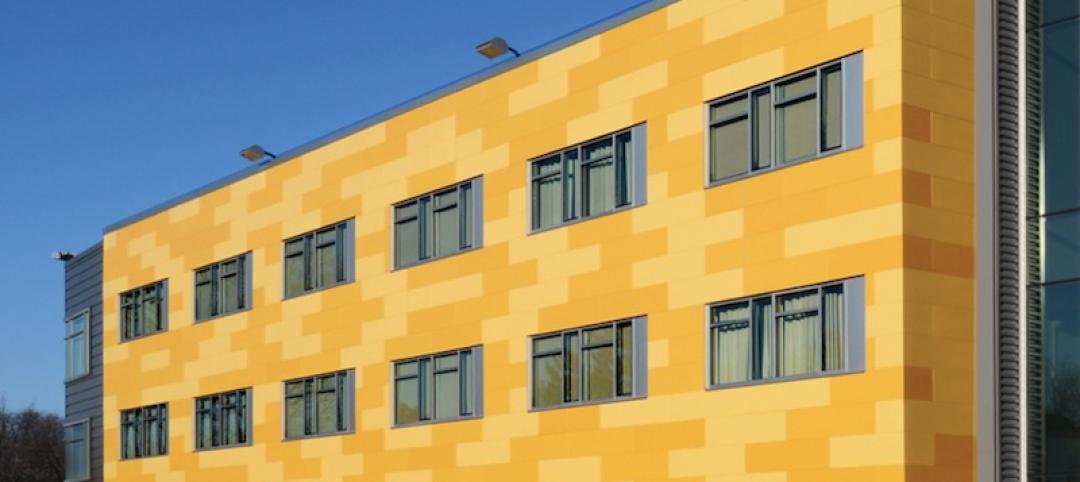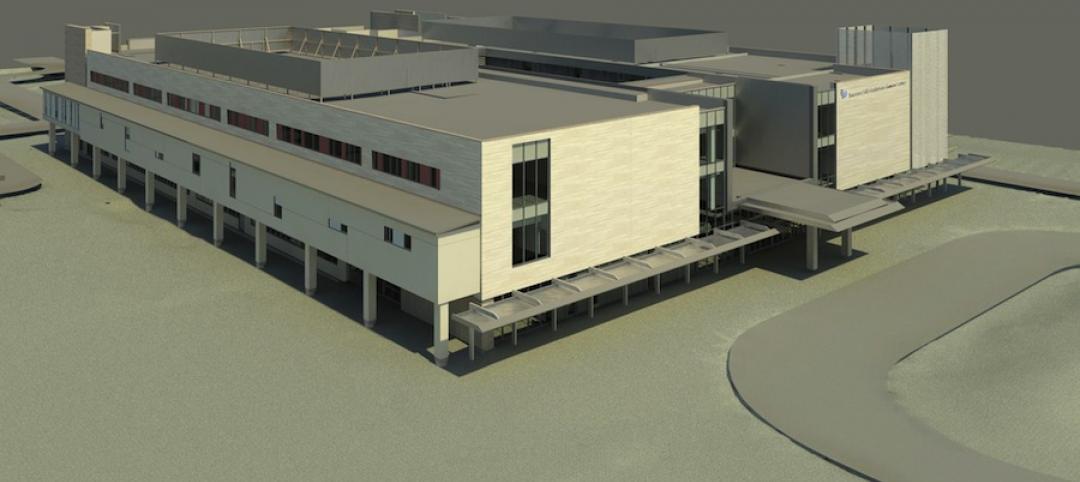There’s more to creating a sustainable hotel than saving water and power by asking guests to reuse their towels. Nevertheless, O&M—from laundry reduction to soap conservation to waste recycling—has long been the major green focus of the hospitality industry, eclipsing sustainable capital projects. Though most lodging chains have adopted sustainability targets, fewer than 100 hotels in the U.S. have achieved LEED Gold or higher to date, including just three Platinums.
A long-awaited version of LEED for Hospitality, which would reflect the unique characteristics of the building type, might encourage more owners and developers to consider certification. But the plan was sidelined as USGBC worked on LEED v4, with hotel-oriented tweaks still contemplated under the NC, EB, and CI systems. Some firms aren’t waiting, and have announced intentions to make their future capital developments greener.
The LEED Volume program, launched in late 2010, aims to grease the wheels by granting precertification of properties once an initial prototype is certified. Marriott was an early adopter, successfully enrolling its Courtyard, TownePlace Suites, and Residence Inn brands. The firm is still working on others, with a stated goal of achieving 300 LEED properties by 2015. Thirteen have hit the mark so far, including seven Golds. Other hospitality-sector Volume participants include Starwood Hotels & Resorts (for the Element brand) and IHG (LEED-EB, for its Green Engage program).
Once the home of Fox Jewelry, this 19th-century building in Grand Rapids, Mich., has been reborn as the boutique, 28-room CityFlats Hotel. Like its new-construction sister property in Holland, Mich., the five-story CityFlats has been certified LEED Gold. Sustainable features include cork flooring, high-efficiency heating and cooling units with occupancy sensors, low-flow plumbing, energy-efficient lighting, and countertops made of Cradle to Cradle–certified glass and concrete. The Building Team: Charter House Innovations (developer), GMB Architecture + Engineering (architect), and GDK Construction (contractor). MICHAEL BUCK / M-BUCK STUDIO
Green marketing to consumers is also gathering steam in the sector. A 2008 survey by Deloitte (http://bit.ly/17389dQ) indicated that business travelers are increasingly interested in sustainable lodging. Forty percent of respondents said they’d be willing to pay a premium for it.
Hotel search engine TripAdvisor (www.tripadvisor.com) quietly rolled out its GreenLeaders program earlier this year, in cooperation with Energy Star, the USGBC, and the United Nations Environment Programme. TripAdvisor vets applicant properties for green O&M but also looks at building design aspects, such as glazing, lighting, HVAC, and landscaping. “Badge” rankings—Bronze, Silver, Gold, and Platinum—are promoted on the TripAdvisor site. Consumers can now select “green” as a search filter, putting sustainability on a par with characteristics like “romantic” and “luxury.” The program is free to participating hotels, which must agree to submit to a third-party audit if questions arise, including consumer feedback regarding inaccurate sustainability claims.
Though they’re less well known to the general public, alternative paths to green hotel branding exist. The main players are Green Key Global (encompassing about 3,000 hotels in the U.S. and Canada); Green Seal, which currently has about 80 participants certified under its GS-33 Standard for Lodging Properties; and Audubon International, with about 150 Green Lodging Program properties concentrated in New York and Florida. Annual participation costs range from $400 to $3,000 per property, involving assessments of O&M as well as the built environment. Some programs require verification by an independent auditor. None are as structure-oriented as LEED.
Alabama’s first LEED Silver hotel, the new 10-story Westin Birmingham, is part of Starwood’s 30/20/20 initiative. The program urges all the company’s properties to reduce energy consumption by 30% and water consumption by 20% by the year 2020. LEED credits related to Sustainable Sites and Indoor Environmental Quality were a focus for the Birmingham project. B&G-MCS A Joint Venture, combining Brasfield & Gorrie and Monumental Contracting Services, created the building in cooperation with Rabun Rasche Rector Reese Architects. Also on the Building Team: The Safaie Landry Partnership (MEP/FP), MBA Structural Engineers (SE/CE), and Bhate Engineering Corp. (geotechnical). © MASON FISCHER PHOTOGRAPHY / COURTESY BRASFIELD & GORRIE
Starwood’s “eco-wise” Element brand, launched in 2008, is another powerful illustration of how seriously the sector is now taking green marketing. The first international property, Element Vaughan Southwest, opened in suburban Toronto this past September, joining 10 U.S. properties. Starwood hopes to roll out more Elements in Europe, North America, and Asia during the coming decade. LEED, minimally at the certified level, will be pursued brand-wide; the flagship Lexington, Mass., property was Starwood’s first Gold-level project. Element’s marketing language combines the traditional “reuse-reuse-recycle” theme with LEED education.
With the AIA Consensus Construction forecast predicting 15% growth in the hospitality sector next year, on top of this year’s 17% increase, investments in green projects may finally be making more sense to decision makers. There’s plenty of room for progress in both the new construction and renovation categories, building on the operational green thinking that’s already pervasive. Stephen Galbreath, AIA, ISHC, LEED AP BD+C, says adaptive reuse of historic properties, an inherently sustainable choice, looks particularly exciting right now.
“Several brands, such as Virgin Hotels and Trump Hotel Collection, have already started to embark on this trend,” says Galbreath, VP for the Commercial Practice Group at RTKL, an ARCADIS company. “Reportedly, Virgin is set to transform an existing Chicago office building, and Trump Hotel Collection is reinventing the Old Post Office building in Washington, D.C. The possibilities of reimagining historic buildings that were never before considered as candidates for hotel development are overwhelming. These are now thought of as viable and sustainable options for hospitality environments.”
The Conrad New York, created through expansion and renovation of an existing Embassy Suites hotel, achieved LEED Gold this year. The 463-suite luxury property also has earned an ISO 14001 certification in environmental management. A green roof and garden provides vegetables for two restaurants, and LEDs account for more than 60% of the hotel lighting. Water-conserving fixtures and sustainable materials contributed to the Gold rating. The Building Team: Kohn Pedersen Fox Associates, Kuwabara Payne McKenna Blumberg, Monica Ponce de Leon Studio, and Deborah Berke Partners (architects), Jill Greaves Design and Remedios Studio (interiors), L’Observatoire International (lighting design), WSP Flack & Kurtz (MEP), Thornton Tomasetti (SE), and F.J. Sciame Construction and Hunter Roberts Construction Group (contractors). MICHAEL MORAN
Related Stories
| Sep 23, 2013
Six-acre Essex Crossing development set to transform vacant New York property
A six-acre parcel on the Lower East Side of New York City, vacant since tenements were torn down in 1967, will be the site of the new Essex Crossing mixed-use development. The product of a compromise between Mayor Michael Bloomberg and various interested community groups, the complex will include ~1,000 apartments.
Sponsored | | Sep 23, 2013
Nichiha USA panels provide cost savings for community project
When tasked with the design and development of a newly constructed Gateway Rehabilitation Center, architects at Rothschild Doyno Collaborative first designed the new center to include metal panels. When the numbers came back, they were challenged with finding a product that would help cut costs and keep them within the construction budget. Nichiha’s fiber cement panels come in a half or less of the metal panel cost.
| Sep 23, 2013
After retrofit and PV array project, N.Y. beverage distributor gets to net-zero
Queens, N.Y.-based beverage distributor Big Geyser’s energy efficiency retrofit project and rooftop solar array installation have positioned the company’s facility to achieve net-zero power.
Sponsored | | Sep 23, 2013
HKS leverages Revu and Bluebeam Studio for IPD on the Banner Health MD Anderson Health Center project
Read how HKS is working collaboratively with all project partners and streamlining information flow using Bluebeam Revu and Bluebeam Studio to digitize communication and deliver the facility using IPD.
| Sep 23, 2013
What you missed: Top construction market news for the week of September 15
Construction market news was mostly positive last week, with the AIA, AGC, and Census Bureau all seeing an uptick in key metrics.
| Sep 20, 2013
August housing starts reveal multifamily still healthy but single-family stagnating
Peter Muoio, Ph.D., senior principal and economist with Auction.com Research, says the Census Bureau's August Housing Starts data released yesterday hints at improvements in the single-family sector with multifamily slowing down.
| Sep 20, 2013
Public owners have mixed opinions regarding integrated delivery: Mortenson study
Mortenson Construction has released "Integrated Delivery: A Catalyst for Collaboration and Teamwork." The free report summarizes findings from a large group seminar conducted by the contractor at the 2013 AIA Public Architect Workshop, which was held in conjunction with this year's AIA National Convention.
| Sep 20, 2013
Perimeter roof edge: The first line of defense in a wind event [AIA course]
Aside from the roof membrane itself, the perimeter roof edge is the most critical component of the roofing system. As such, it warrants more scrutiny when designing a roof system.
| Sep 19, 2013
What we can learn from the world’s greenest buildings
Renowned green building author, Jerry Yudelson, offers five valuable lessons for designers, contractors, and building owners, based on a study of 55 high-performance projects from around the world.
| Sep 19, 2013
6 emerging energy-management glazing technologies
Phase-change materials, electrochromic glass, and building-integrated PVs are among the breakthrough glazing technologies that are taking energy performance to a new level.


















